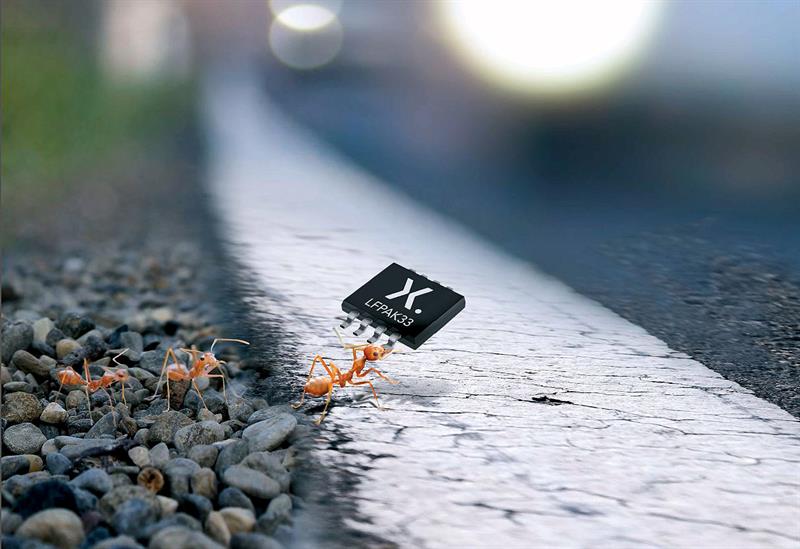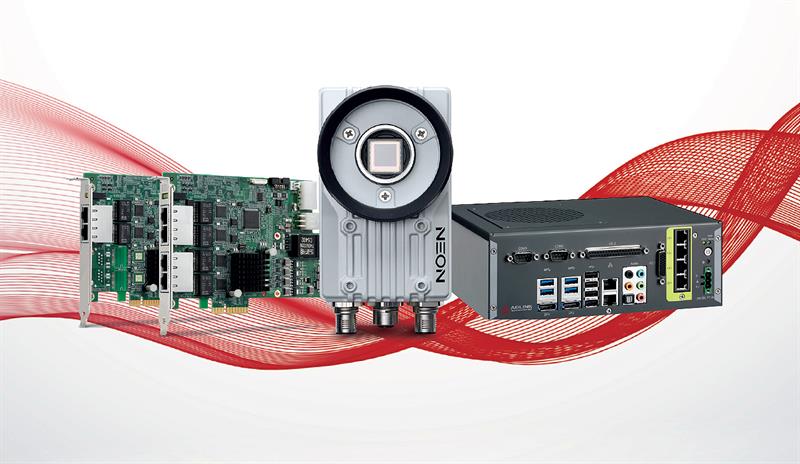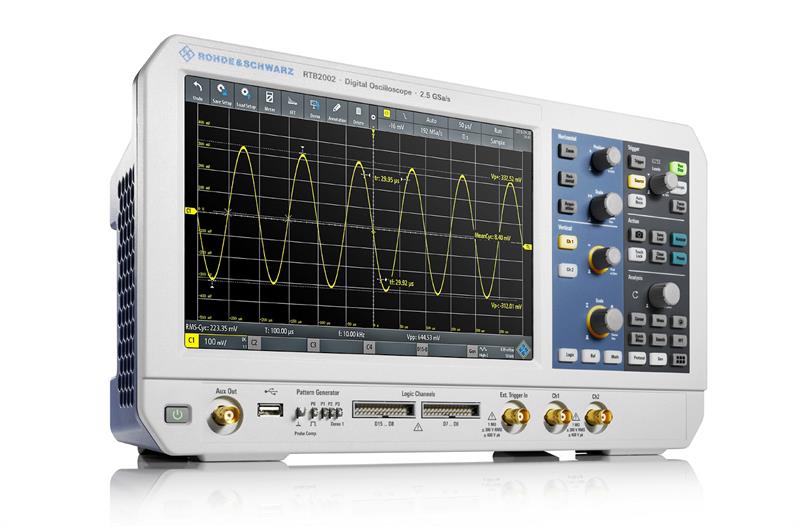The Synergy Platform provides developers with access to a complete embedded platform, starting with an application programming interface to leverage a full software framework built around Express Logic’s X-Ware package.
“Every design team in the world, including Europe, is facing a 50% increase in new project starts over the last couple of years and this is placing a massive pressure on the designer,” added Andy Harding, director of core marketing at Renesas.
“We launched the Synergy platform last year and are accelerating its release this year, so it’s the perfect time to engage with Mouser, which is active in the digital space, effective at new product induction and has a great reach into the design community worldwide.”
The Synergy Software Package is designed to remove obstacles facing design engineers and to speed time to market for IoT, industrial and real-time operating system-based applications. It removes from developers the need to create and maintain low level repetitive software for each of their embedded projects. The platform also integrates a range of scalable ARM Cortex-M based MCUs.
Express Logic rolled out the X-Ware IoT Platform, providing ‘industrial grade’ connectivity for deeply embedded IoT sensors, devices, edge routers, and gateways.
Michael May, vp of marketing, said: We taken an IPv4/v6 protocol stack, integrated it with ThreadX and added protocols which allow connection to the cloud. It’s industrial grade because there’s no open source code.”
Said to be the first general purpose processor based on FD-SOI process technology, the i.MX 7ULP processor family from NXP is optimised for ultra low power modes. According to the company, the device’s heterogeneous architecture gives the ability to reduce power consumption within low power run and standby modes. This, it continues, allows for scalability from high performance processing at reduced power consumption to energy efficient lower end processing.
Maximum power efficiency and system integrity is said to be achieved through decoupling of the application and real-time domains. Each domain has separate power, clocking and peripherals to deliver a heterogeneous architecture. The Cortex-M4 based real time domain handles low power operation and data consumption modes, while the Cortex-A7 based application domain is used for active modes.
Meanwhile, NXP has also launched the Cortex-M4 based Kinetis K27/K28 family. Running at up to 150MHz, the MCUs come with up to 1Mbyte of embedded SRAM and up to 2Mbyte of flash.
“Embedded designers can now push the limits of integration to create more competitive products with the K27/K28 MCUs,” said Geoff Lees, general manager of NXP’s microcontroller business.
 Nexperia added three series of common mode EMI filters with integrated ESD protection. The filters offer support for USB 3.1 Type C, HDMI 2.0 and MIPI M-PHY interfaces and provide TrEOS ESD protection diodes in the same package. Designers can determine at a late stage whether they need to include EMI filtering, without being concerned about PCB layout spins. Turn-on time is 0.5ns, which is said to enable devices to withstand up to 20kV contact discharge. The company also revealed a thermally-enhanced, loss-free package for automotive power MOSFETs which it claims has a footprint 80% smaller than industry standard devices.
Nexperia added three series of common mode EMI filters with integrated ESD protection. The filters offer support for USB 3.1 Type C, HDMI 2.0 and MIPI M-PHY interfaces and provide TrEOS ESD protection diodes in the same package. Designers can determine at a late stage whether they need to include EMI filtering, without being concerned about PCB layout spins. Turn-on time is 0.5ns, which is said to enable devices to withstand up to 20kV contact discharge. The company also revealed a thermally-enhanced, loss-free package for automotive power MOSFETs which it claims has a footprint 80% smaller than industry standard devices.
Congatec showed SMARC 2.0 modules supporting USB-C connectivity aimed to simplify the use of embedded technology. The USB-C functionalities include USB 2.0, USB 3.1 Gen 1 support with data rates of up to 5Gbit/s and the alternate modes for Display Port 1.2 and USB Power Delivery, supporting a power envelope of up to 100W. It also showcased a best practice design solution for the simplified orchestration of wireless sensor networks. The solution is based on the application ready Congatec Cloud API for IoT gateways that can integrate local sensor networks into cloud solutions. The main software components of the best practice solution are the different Cloud API function modules, as well as the demo and test modules for provider independent IoT clouds.
Future Electronics is extending its franchise distribution agreement with display manufacturer Tianma NLT to include EMEA. With the franchise extension, Future can offer customers a range of displays in sizes ranging from 1 to 20in, with resolution up to Full HD and with various configuration and customisation options, including optical bonding and touchscreen overlays.
Farnell had several announcements, including the release of an Intel Curie module based board called tinyTILE and the latest BeagleBone open hardware computer. Created in partnership with Intel, tinyTILE measures 35 x 26mm and can be programmed using either the Arduino ID, Intel Curie Open Developer Kit or Anaren Atmosphere for applications such as social media, sports and fitness devices. Meanwhile, BeagleBone Blue is built specifically for use in the development of robotics and autonomous vehicles, possessing flexible wireless networking capabilities and a real-time capable Linux system. Farnell also announced the Pi Desktop, said to convert Raspberry Pi 2 and 3 into a desktop computer with an integrated real time clock and intelligent power management controller.
 Adlink introduced the VPX3010 series, rugged 3U VPX processor blades with a 12 core Intel Xeon processor D-1500 SoC for server-grade computing performance. The SWaP-optimised board supports a range of VPX and VPX REDI VITA specifications, as well as VITA 65 OpenVPX Architecture Framework and MIL-STD-810G. It is available in convection and conduction-cooled formats, with conformal coating for military and aerospace applications. Other newly released products include the NEON-1021 Intel Atom E3845 processor-based smart camera; EOS-1300 4CH PoE Compact Vision System; and PCIe-GIE72/74 2/4CH GigE Vision PoE+ frame grabbers.
Adlink introduced the VPX3010 series, rugged 3U VPX processor blades with a 12 core Intel Xeon processor D-1500 SoC for server-grade computing performance. The SWaP-optimised board supports a range of VPX and VPX REDI VITA specifications, as well as VITA 65 OpenVPX Architecture Framework and MIL-STD-810G. It is available in convection and conduction-cooled formats, with conformal coating for military and aerospace applications. Other newly released products include the NEON-1021 Intel Atom E3845 processor-based smart camera; EOS-1300 4CH PoE Compact Vision System; and PCIe-GIE72/74 2/4CH GigE Vision PoE+ frame grabbers.
Microchip unveiled the PIC18FK42 8bit MCU family, featuring Core Independent Peripherals, high resolution analogue, on-chip Direct Memory Access and vectored interrupts. The family is said to boast the largest total memory of any 8bit PIC MCU, with up to 128kbyte of flash and 8kbyte of RAM.
Renesas Electronics announced the RZ/N series of industrial networking communication microprocessors, suitable for use in industrial network devices. With three product groups addressing high-end, mid-range and low-end applications, the Cortex-M3 based device integrates a five-port Ethernet switch, providing support for leading industrial network protocols.
Looking to help those developing products aimed at IoT applications, Texas Instruments has launched the SimpleLink MCU platform. According to the company, SimpleLink delivers a range of security features, broad connectivity protocol support and advanced analogue integration, as well as low power MCUs.
Amongst the first products in the SimpleLink range are the CC3220 wireless MCU and CC3120 wireless network processor. The CC3220 features an application processor – an 80MHz Cortex-M4, with 256k of RAM and 1Mbyte of flash – and a network processor with a hardware crypto engine. While the CC3220 supports Wi-Fi, the range will be extended in the coming months with devices supporting Bluetooth Low Energy, sub GHz and dual band radios.

Rohde & Schwarz launched the RTB2000 at Embedded World, saying the device is the first low cost oscilloscope to offer touchscreen operation and 10bit vertical resolution, enabled by an A/D converter designed in house. Alongside a 10Msample acquisition memory on each channel, the scope features a 10.1in capacitive touchscreen. The RTB2000 comes in two and four channel models, with bandwidths of 70, 100, 200 and 300MHz.
Silicon Labs has expanded its Wireless Gecko portfolio with the EFR32xG12 SoC, said to support a broader range of multiprotocol, multiband use cases.
“The EFR32 Wireless Gecko portfolio is the most versatile, feature-rich multiprotocol platform available today,” said Daniel Cooley, general manager of Silicon Labs’ IoT products. “We continue to enhance the Wireless Gecko platform with new hardware and software capabilities that advance multiprotocol connectivity and address the real-world requirements of IoT products.”
According to the company, Wireless Gecko’s output power – up to +19dBm – reduces system size, cost and complexity. EFR32xG12 SoCs feature a 2Mbit/s Bluetooth PHY, as well as an on-chip security accelerator.
Looking to address a gap in the market between application processors and single core MCUs, Cypress has launched PSoC 6, featuring Cortex-M4 and Cortex-M0+ cores.
Jim Davies, director of marketing, said the device would suit two types of customer. “There’s makers, who need to get product to market at low cost and those who use something like a Cortex-M0+, who are looking to address next generation needs, but who want more performance.”
Manufactured on Cypress’ 40nm SONOS process, PSoC 6 is said to enable active power consumption of 22µA/MHz and 15µA/MHz on the Cortex-M4 and Cortex-M0+ cores, respectively.
The device also offer a hardware based Trusted Execution Environment and a set of symmetric and asymmetric cryptographic algorithms in an integrated hardware coprocessor.













